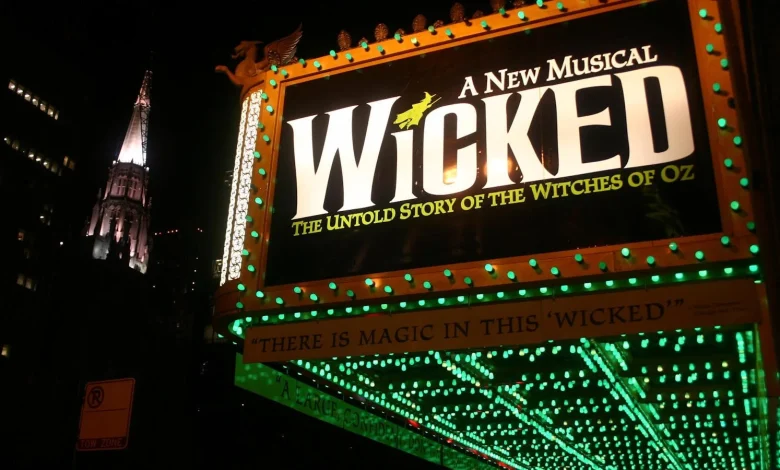Through the Looking Glass: What ‘The Wizard of Oz’ tells us about our current economic landscape

Last week, “Wicked: For Good,” the sequel to last year’s box-office-shattering film based on the hit Broadway musical, made its highly-anticipated premiere in theaters. The film was officially released in theaters in the United States on Friday. Once again, the wonderfully weird world of Oz has been brought to our cultural forefront, with the film already projected to earn a record $200 million its opening weekend.
It’s hard to come across an American children’s story more ubiquitous than “The Wizard of Oz.” Its dazzling conglomerate of elements appear entirely random on their own, but together have placed themselves within the collective fabric of our nation’s culture. With ruby-red slippers, flying monkeys, a quirky cast of side characters and the everyday American farmgirl at the center of it all, the world of Oz seems a whimsical fantasyland that exists firmly outside the realm of reality.
But before the “Wicked” movies, before “Wicked” the musical, before “Wicked” the book, before “The Wizard of Oz” the movie and the endless iterations that have been born from this elusive and timeless world, was the text that started it all: the 1900 novel, “The Wonderful Wizard of Oz” by L. Frank Baum.
What may be less widely known, however, is a theory that has gained increasing traction over the years: that “The Wonderful Wizard of Oz” is really a carefully-crafted political allegory for the economic turbulence and social unrest at the end of the 19th century, leading up to the 1896 presidential election.
The leading issue during this election was the bimetallism debate; in 1873, the United States shifted from using both gold and silver as currency toward the gold standard, demonetizing silver and invoking a bitter debate between social classes. Farmers and miners supported the free silver movement, believing that more silver in circulation would inflate market prices and allow them to pay off debts. Meanwhile, elites such as businessmen, bankers and investors wanted to maintain the gold standard, arguing that backing the nation’s currency on a fixed amount of gold would keep the dollar amount high and be better for the economy in the long run.
The debate was a central feature of the election, in which Democratic candidate William Jennings Bryan advocated for the free silver movement while the winning candidate former President William McKinley, a Republican, backed the gold standard.
But what does any of this have to do with “The Wizard of Oz?”
In 1964, author and historian Henry Littlefield published a thesis arguing that the seemingly innocuous children’s story is truly a political allegory for populism and the 1896 election. In this interpretation, the Yellow Brick Road represents the gold standard, while Dorothy’s slippers, originally silver rather than ruby, represent the free silver movement.
In the years since, numerous other associations have been made between the novel’s characters and key political figures at the time. In one interpretation, Dorothy represents Americans with voting rights, while the Wizard represents Bryan; the Scarecrow represents farmers; the Tin Man represents industrial workers and the union movement; the Cowardly Lion represents political leaders who lack boldness and necessary decisiveness; the Wicked Witch of the West is commonly associated with western economic elites and obstacles faced by the working class. It has even been pointed out that “Oz” is the abbreviation for ‘ounces,’ the unit of measurement for gold and silver, furthering the hypothesis that the bimetallism debate is at the true crux of the story.
Through this lens, Dorothy’s story changes radically; it now details a group of everyday Americans in the late 19th century being led along the gold standard of the elites, only for their omnipotent leader to be a fraud and the silver movement the key to economic prosperity all along.
There is widespread debate over just how much, if any, of Baum’s novel was intentionally disguised to fit within this allegory. But applying this interpretation of Oz allows one to view it as a critique of the Gilded Age — an era commonly associated with booming wealth, economic prosperity and the American Dream.
However, this time period is also marked by rapidly increasing economic inequality, widespread poverty and wealth in the hands of industrialists and business tycoons. The Gilded Age’s name was coined by Mark Twain, describing a period that glittered on the surface but was tarnished and corrupt underneath. And what is the world of Oz if not exactly this — a glittering emerald city at the end of a gilded road, whose perfection quickly falls apart when the curtain is lifted?
The key issues that were debated during the Gilded Age are not simply a relic of the past. Similarly to the 1890s, our current economic landscape appears to be at a turning point — to the extent that some experts have likened it to a second Gilded Age. A 2024 study by Pew Research Center found that the number of Americans living in middle-class households dropped from 61% in 1971 to 51% in 2023, while the number of Americans living in upper and lower-class households has increased, suggesting a shrinking middle class.
There is also evidence that the economic policies of the second administration of President Donald Trump are exacerbating the already widening economic gap, with a recent report by the Tax Foundation stating that increased tariffs on U.S. trading partners will result in an average tax increase of $1,200 per household this year and $1,600 in 2026. Trump himself has referenced McKinley as an inspiration when it comes to his economic policies, stating days after taking office that we as a country were “at our richest from 1870 to 1913. That’s when we were a tariff country.”
But richest for whom? Certainly not everyday Americans. According to the Bureau of Labor Statistics, the average American family in 1901 spent 56% of its income on food and clothes; in the early 2000s, the comparable share was closer to 17%. According to PBS, in 1890, 11 million of the 12 million families in the United States earned less than $1,200 per year; of these families, the average annual income was decisively below the poverty line at $380. In 1913, in an effort to decrease tariffs, the United States ratified the income tax amendment as a response to the economic inequality of the Gilded Age. This is not an economic period that we as a nation should aspire to return to.
In “The Wonderful Wizard of Oz,” after Oz is proven unable to grant Dorothy’s wish of returning home, he and Dorothy build a hot air balloon in order to leave the city. However, it flies away with Oz before Dorothy is able to board. Glinda the Good Witch reveals that Dorothy had the power to leave Oz this whole time, simply by clicking her heels three times. Dorothy returns to her home of Kansas, her heels gone but reunited with her aunt and uncle. Her adventures in Oz are likened to nothing more but a dream.
Following the political allegory interpretation of Oz, several morals can easily be extrapolated from this ending: The ‘free silver’ movement, represented through the silver heels, is the true way in which to escape the glitzy deception of Oz. The path to a happy ending is through returning to America’s agricultural heartland of the Midwest, upon which our economy has historically been built upon. In order to escape political corruption by the wealthy few, we must take off the emerald-colored glasses and utilize our own power rather than relying on governmental leaders to do so.
Of course, this is not the only interpretation of “The Wizard of Oz.” Its story has been compared to other historical events during this time period, such as the Spanish-American War or the American steel industry. Baum himself described “The Wizard of Oz” as coming to him from “pure inspiration” and “right out of the blue.” The question of whether the novel originally attempted to explore any deeper topics may remain forever shrouded in mystery.
But through the lens of this interpretation we can glean something new from the 125-year-old tale: how we as a nation should proceed at a time when we appear to be dangerously slipping back into an economic chapter reminiscent of the Gilded Age, an era formed on false promises and political corruption. Perhaps one of the most important lessons from “The Wizard of Oz” is the reminder that the glittery world of Oz was always just a fantasy, similar to the Gilded Age itself — promising in theory but made only for a select few. Now is not the time for a sequel to 1896. Now is the time to click our silver heels and see if we can find a way home.





